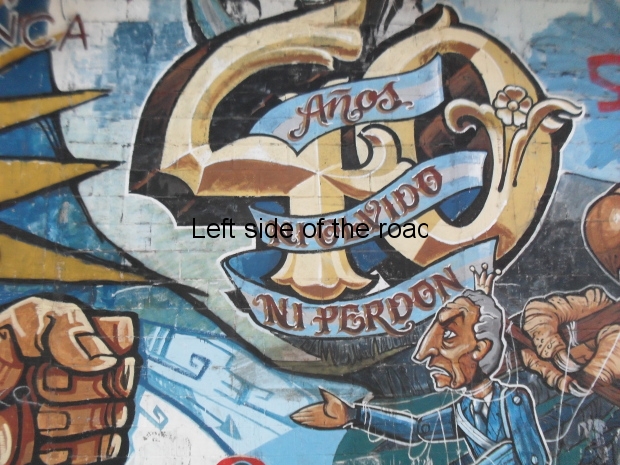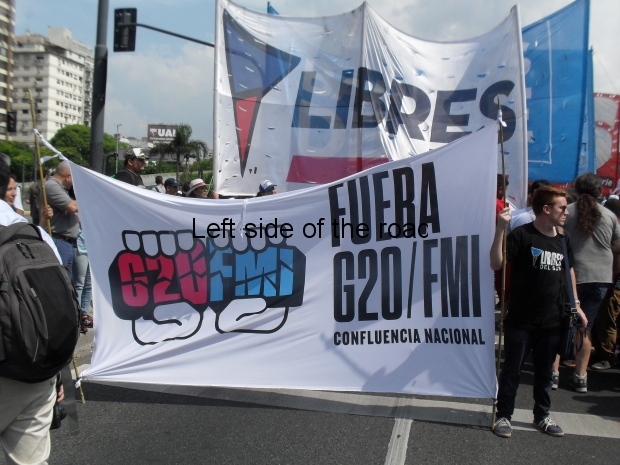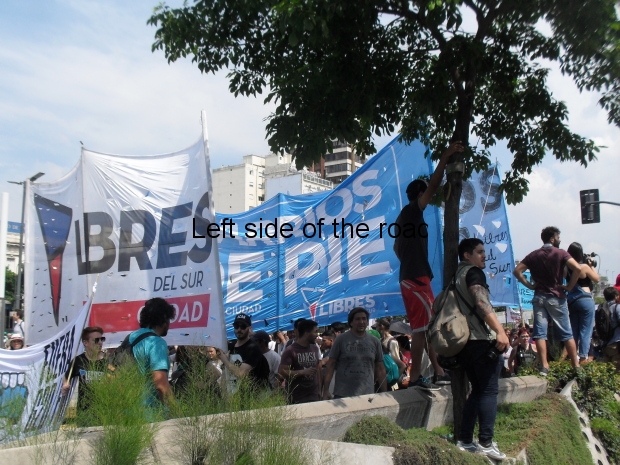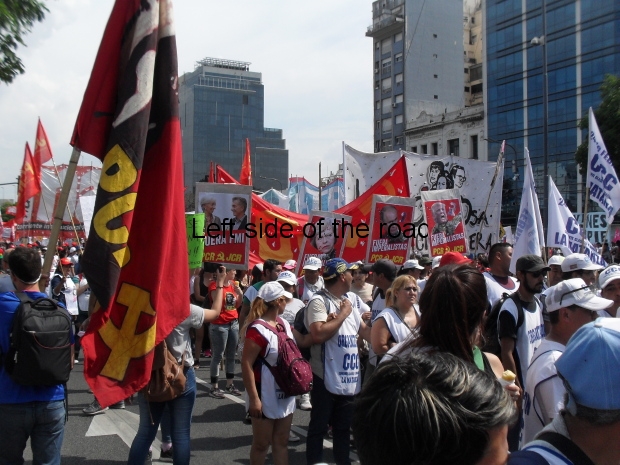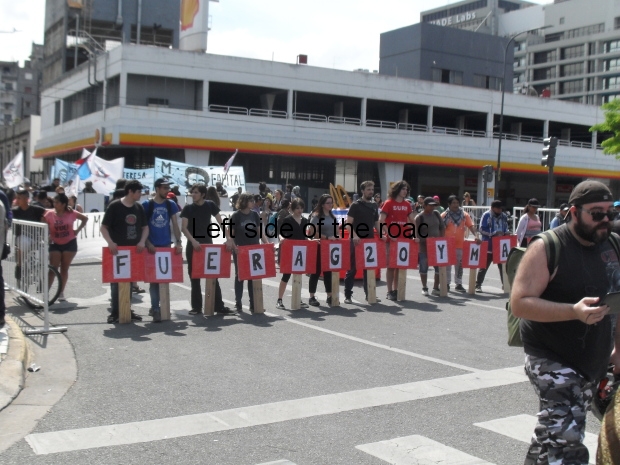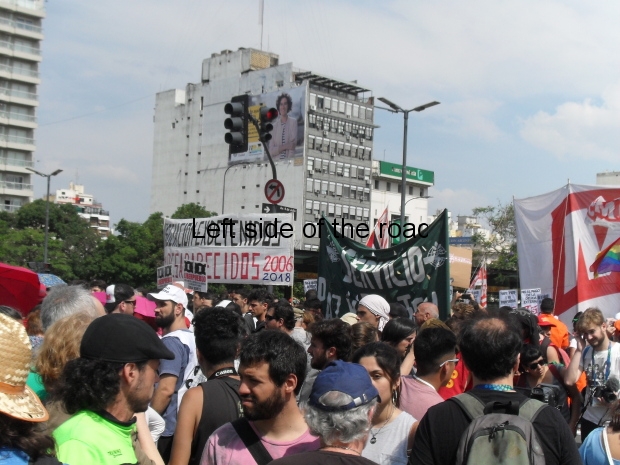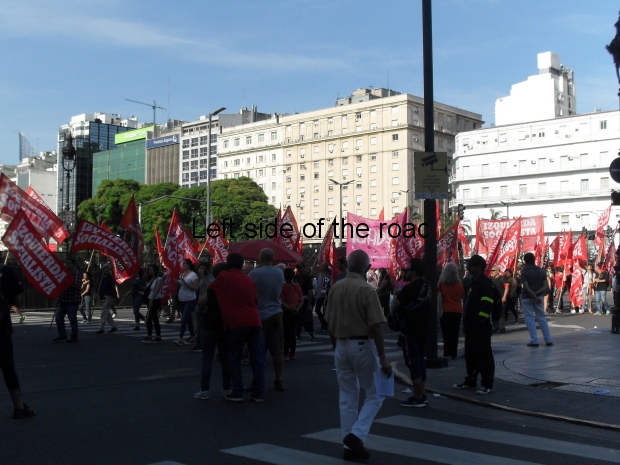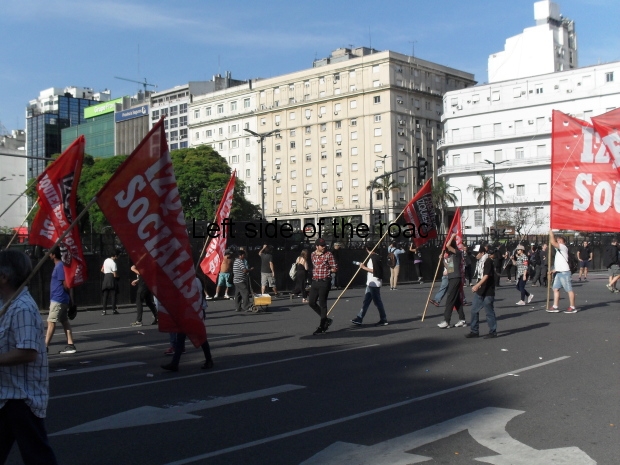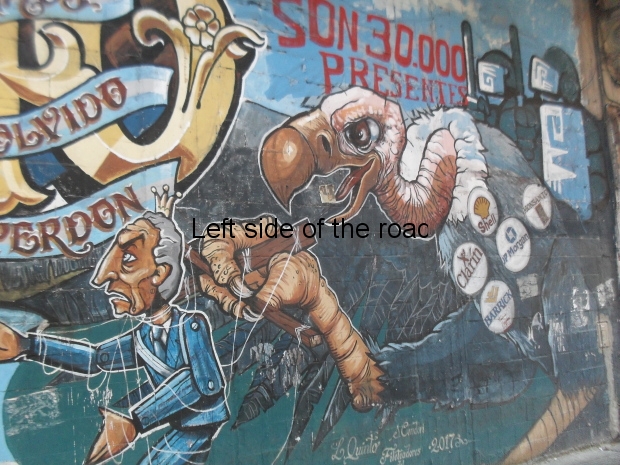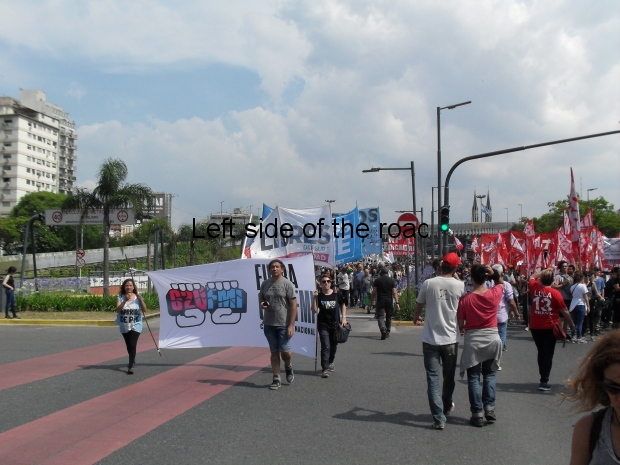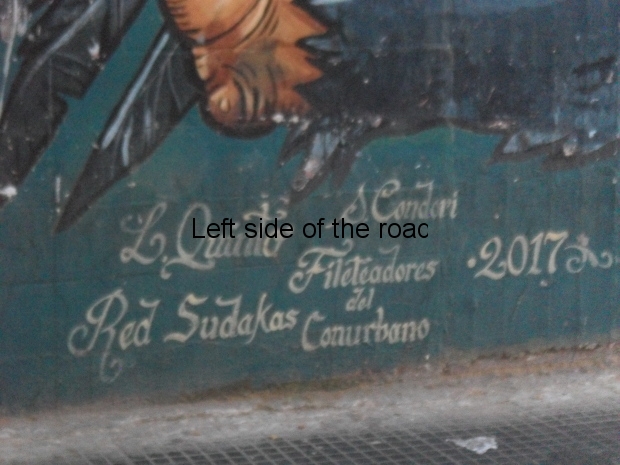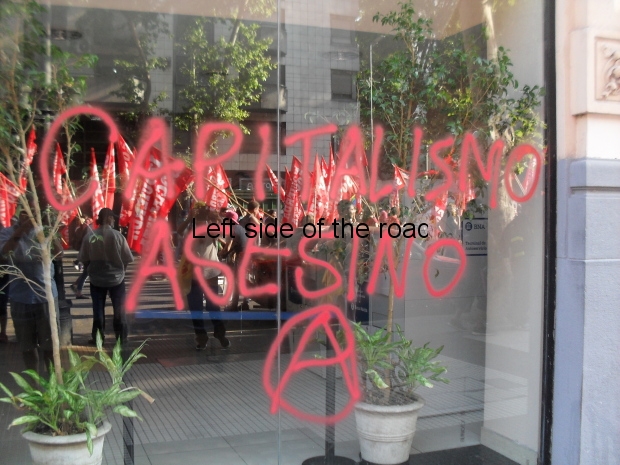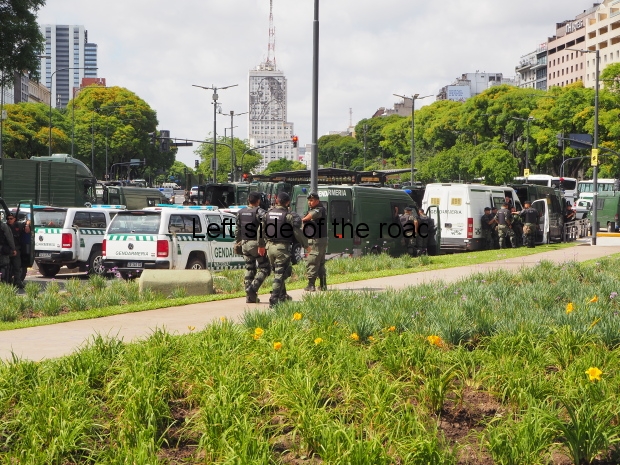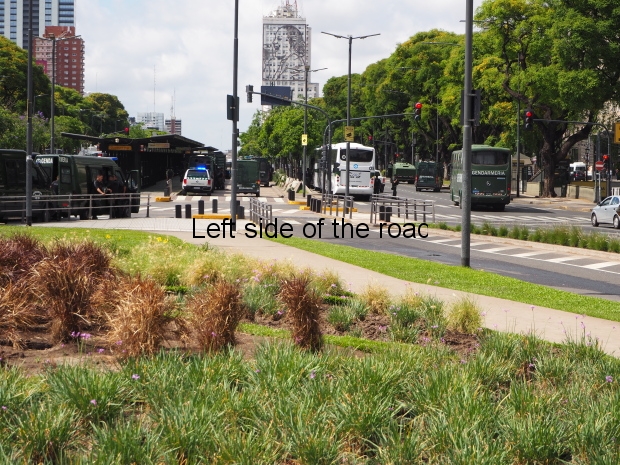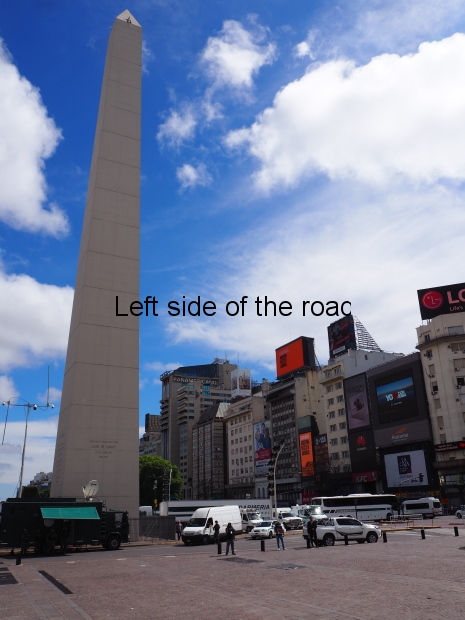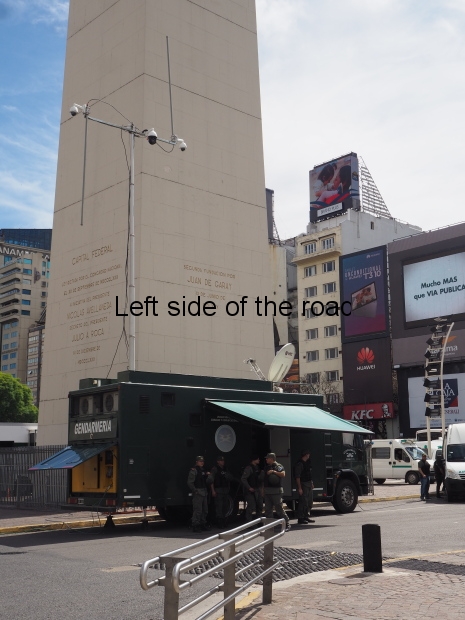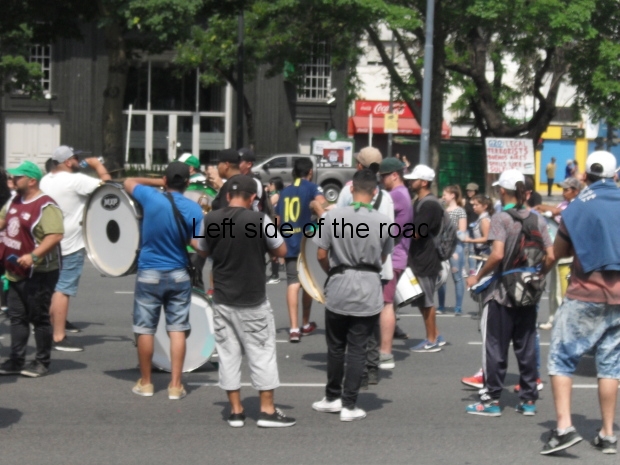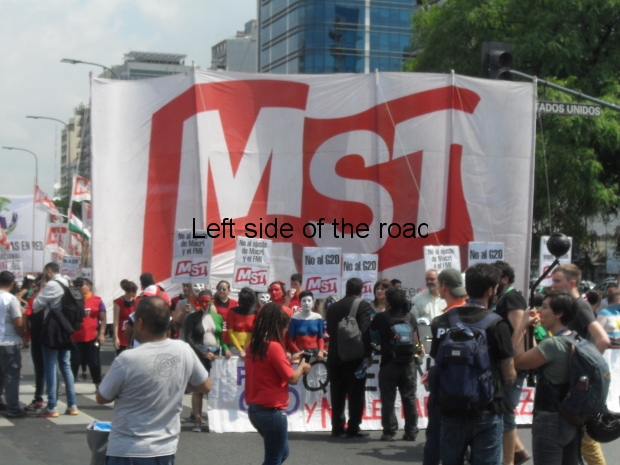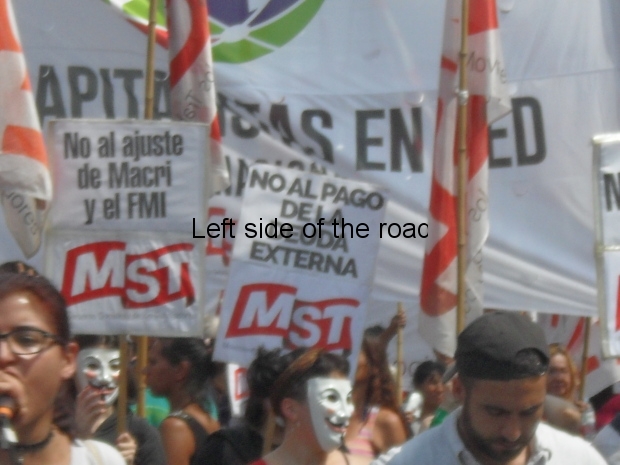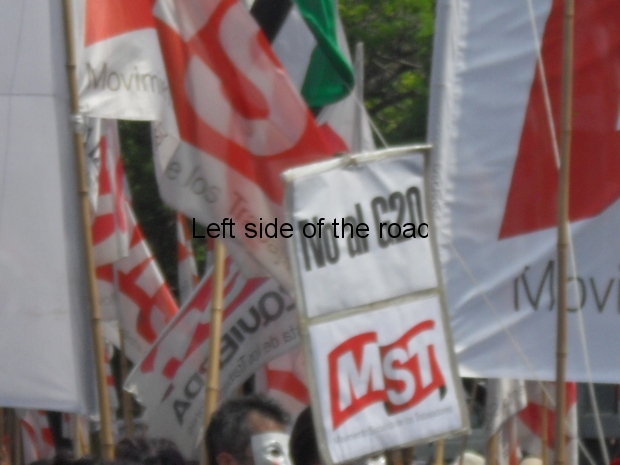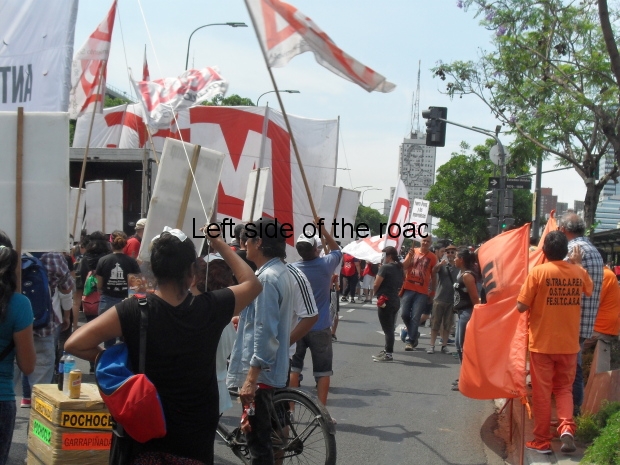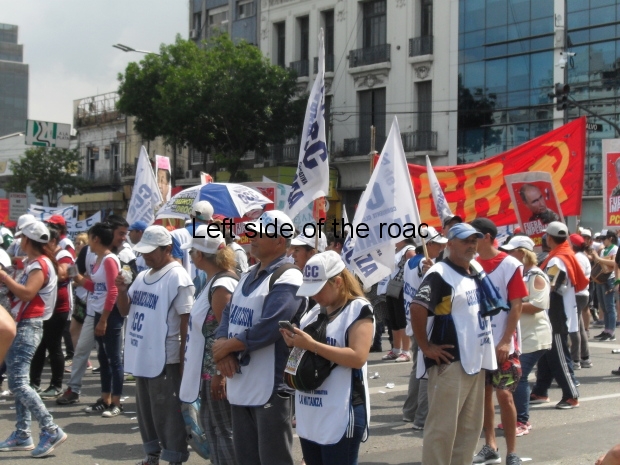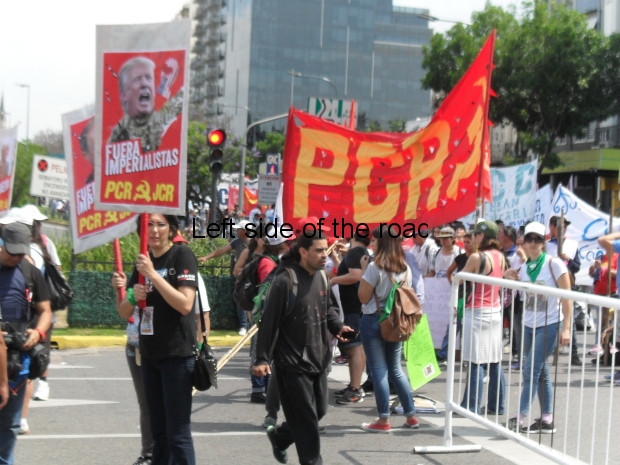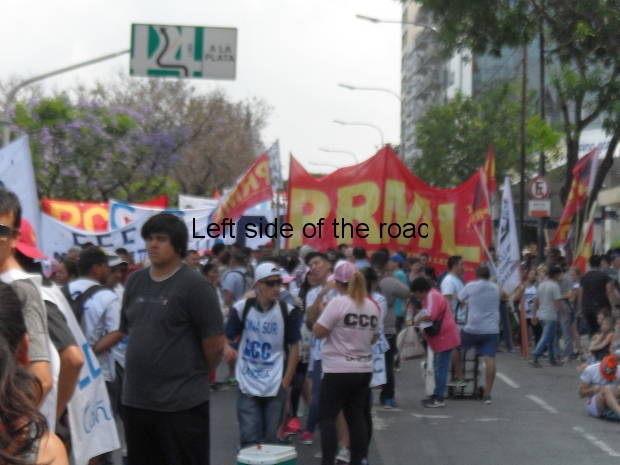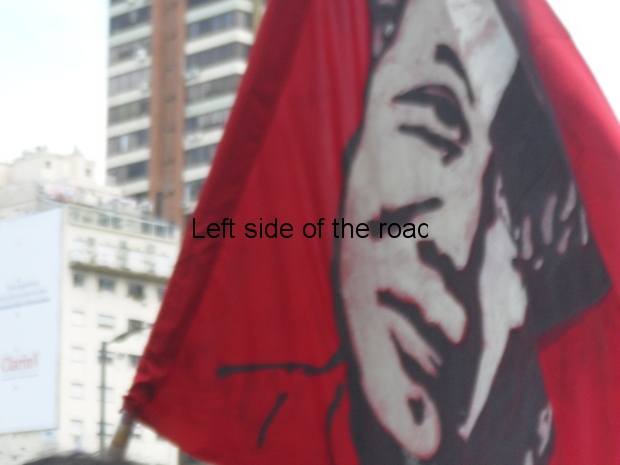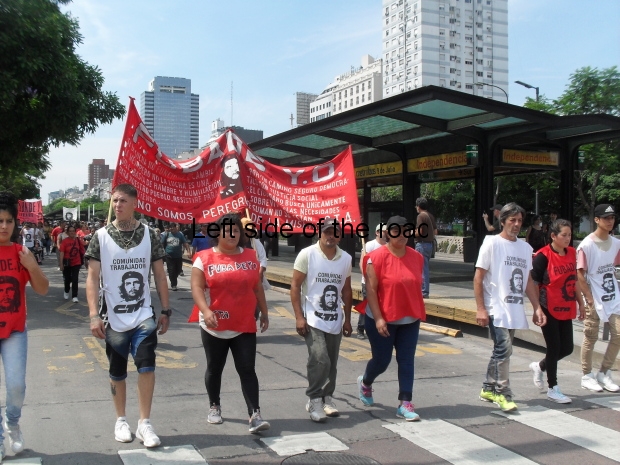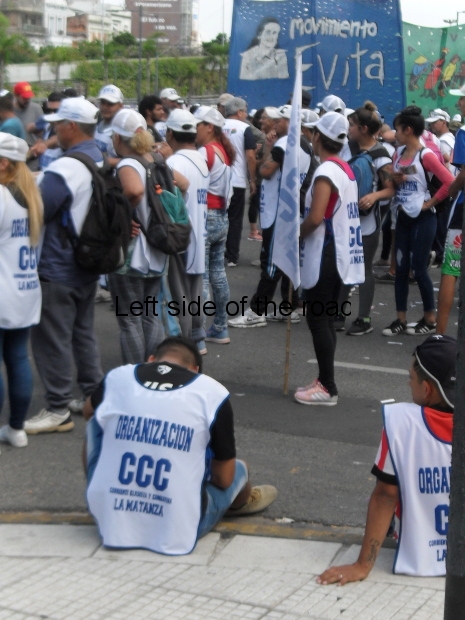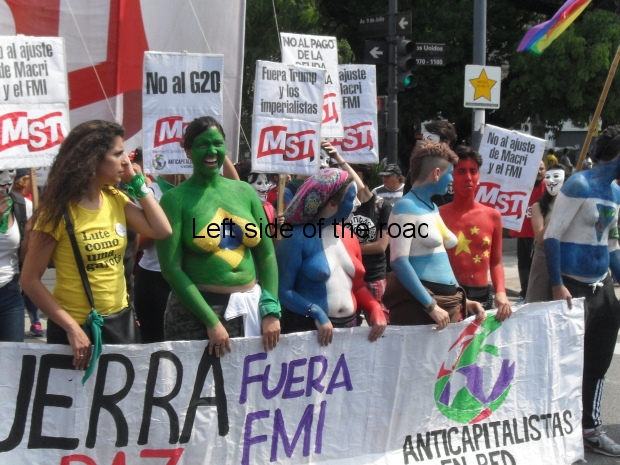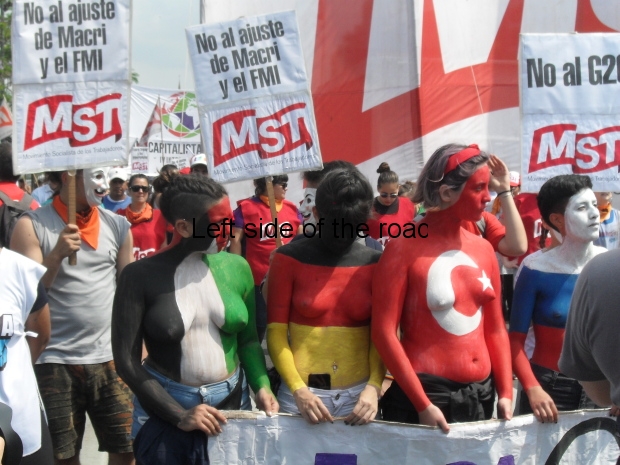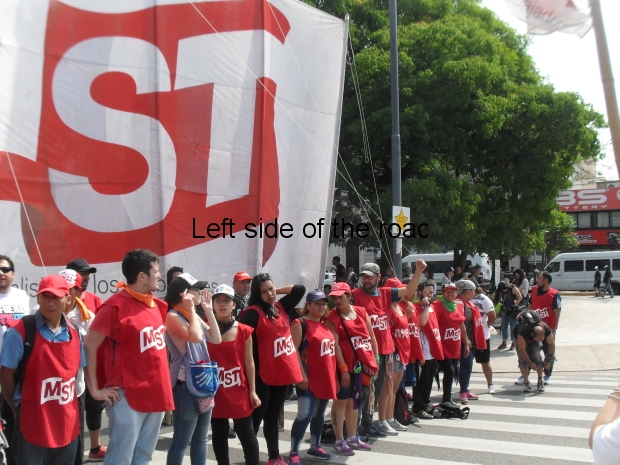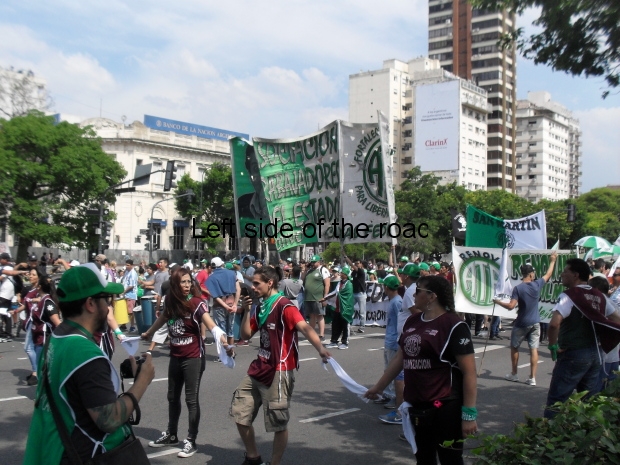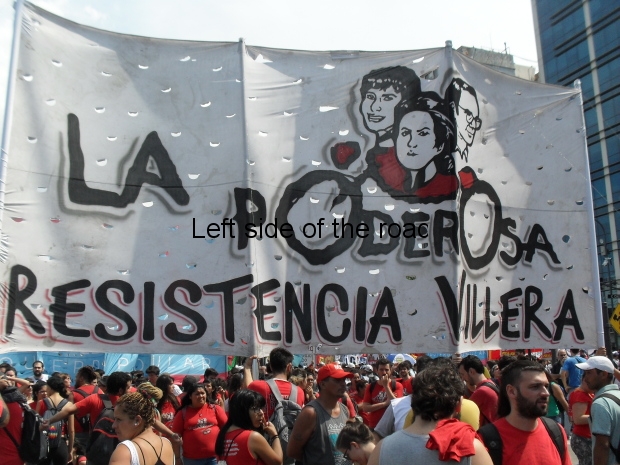
G-20 preparations
The Cost of the Buenos Aires G-20
I’m not going to really discuss any of the issues that might, or might not, have resolved at this day and a half get-together of the world’s top gangsters but more about the effects that unnecessary meeting had on the city of Buenos Aires and the country of Argentina in general.
The Argentine government, police and military have probably been clapping each other on the backs since the return to ‘normality’ last Sunday. As a security exercise it was definitely a success. They avoided confrontations (although many in the riot police would have loved to have got their hands dirty – they have shown little reluctance to do so when confronted with peaceful gatherings in the past) and any march of many thousands of working people of Buenos Aires was kept far enough away from their foreign visitors that it wouldn’t have effected their appreciation of the champagne.
But at what cost, in both financial and social repercussions.
20,000 police, hundreds of the high, black barricades – known locally as ‘vallas’ – which closed off streets and surrounded ‘sensitive’ buildings, the lost wages of those who couldn’t get to work due to the cancellation of public transport (buses, local trains and the underground), the loss to businesses in the centre of town (shops, restaurants, etc.) who found that the normally busy streets were more like those after some apocalyptic disaster.
There were security rings within security rings within security rings.
The police presence was there not to provide security to the civil society but for a self selected group of VIPs, whose decisions affect the lives of all those on the planet but of whose lives they know little and care even less.
Minutes after thousands of people, less than half a kilometre away, were rejecting the political decisions that cause unemployment, homelessness and real hunger these same ‘leaders’ of the free (capitalist) world were enjoying a banquet where cost was the last of anyone attending’s concern.
I wondered what these people, who are not entirely stupid but totally heartless, thought about a huge part of a major capital city being in lock down just so they could go the Teatro Colon and ‘enjoy’ a lack lustre dance performance and then a slap up meal. What is behind their thinking when the decisions they make have an effect upon millions of people but they seem to have no concern what those very same people have to say about their policies? Are they in such a protective bubble that they can just compartmentalise such opposition as the work of self-interested and professional agitators? Do they not see the conditions in which so many throughout the world live and struggle to exist?
But them I remembered that they live in a world apart. A world where the maintenance of their decrepit and moribund system is all that matters. At times that system is, more or less, tolerable for a sizeable proportion of people on the planet, even at times a majority, but their periodic crises means that – as it was generations ago – the vast majority of even those chosen few are only a wage packet away from penury and real suffering. Those who live such a life all the time are used to it so why should they complain.
Which city will be welcoming the G-20 next year? Buenos Aires has shown that ‘trouble’ can be averted – but at a price. How many cities would be prepared to accept such disruption and loss for a meeting that barely lasts two days? One thing for sure is that Paris won’t be chosen for that ‘honour’, the people there having shown (as they did in the 19th and 20th centuries) that they don’t suffer such fools gladly.
Conspiracy Theory or not
Not being a devout conspiracy theorist doesn’t mean that sometimes I think some things are too pat to be true.
I read two articles in the local newspapers in the lead up and start if the G-20 conference and don’t know how they might have been reported outside of the country.
One was related to a number of supposed ‘bomb alerts’ that occurred in the city in the days leading up to the summit. I don’t know where these alerts occurred as there was no definite information that could pinpoint a particular location. Also I was in the centre at the time of these so-called ‘alerts’ and wasn’t aware of any additional activity that I would have thought would have accompanied such a response in a situation of high alert.
And the pictures of the supposed bombs were like a five year old’s impression of an explosive device. I wouldn’t have been surprised if the image in the newspaper wasn’t of a black, round object with the world ‘bomb’ written in white on the side and a fuse sticking out the top.
I don’t totally reject the idea that someone might have made a telephone call with a false bomb alert to cause disruption but the other example is even more food for a conspiracy theory.
It seems that a taxi was stopped on the Thursday and a number of ‘Molotov’ cocktails were found, together with a rather large bag of walkie-talkies. As a result of this a number of people were detained. But something was wrong from the beginning when the story was being related on the TV news.
All the bottles looked as if they had just come out of the supermarket, the liquor thrown away and petrol put in its place. All the bottle were of a different size and mark and the labels were pristine, with not a mark of petrol to spoil the image. It was if they were being put on show to advertise their involvement in the heinous attempt to subvert democracy.
But if that wasn’t bad enough the report continued by saying that all those detained had been released on the orders of someone high up in the Argentinian judiciary. Are they kidding?
To the best of my knowledge there wasn’t a general and random ‘stop and search’ operation in force. If that was the case then any reason for stopping a vehicle would have been based on ‘intelligence’. If that was the case how could the security forces then let whoever was implicated in this act of violence go free? Are they pulling someone’s plonker? I doubt whether this issue will ever go through the courts.
As far as I’m concerned, with my ‘conspiracy theorist’ hat on is that theses two reports were all conceived to make the overwhelming security presence(and cost) more acceptable to impressionable Bonaerenses.
But there were positives from the summit.
Trump showed himself not just to be a bully but so arrogant that even though he might get his way in the short term he is only leaving himself with almost insurmountable problems in the future. He spurned those who he might need in the future. He treated his host (an equally cretinous individual) with contempt, even though the lapdog would have done anything to ingratiate himself with the occupant of the White House.
The American considers that he is so settled in his homeland that he doesn’t need the support of other nations. But his knowledge of world history is as dire as his interpersonal skills. He seems to totally ignore the de-dollarisation that is taking place under his nose. He doesn’t seem to be concerned that alliances are being made between those who were previously ‘enemies’. He doesn’t realise that he is the one who will wake up one morning to a different world. A world where competing powers are in an anti-American political and economic alliance.
If American was the loser in this meeting then so was the old world, the European powers such a Britain, France, Spain and Italy – who were barely mentioned in any analysis of what was happening in Buenos Aires.
Whether this will affect the incumbent in the Casa Rosada is another matter.Argentinian politics are complicated (not that the situations in other countries are not equally complex) and although the life of so many was effected over these three days and with the majority of the population living in the general Buenos Aires conurbation, nothing is secure in the future.
Corruption and distrust of politicians is deep within the Argentinian population but the people seem to have a memory lapse when it comes to the future. Corruption claims are made against everyone with a public profile. Even the Co-ordinator of the ‘Madres of the Plaza de Mayo’ has a corruption charge pending.
Some will argue that this is just a result of the ability of one section of the society to manipulate the media and the judiciary. And there’s probably a lot of truth in that. The problem is that when corruption has existed for such a long time, has been embedded in the body politic, many aren’t even aware of what they are doing and make themselves targets.
An Argentinian told me that the problem with his people is that they think with their sentiments rather than their minds. This, in some ways, accounts for the still deeply embedded approach (and appreciation by some) towards Eva (Evita) Peron.
But this is starting to go away from the matter of the G-20.
(I stated at the beginning of my series of posts in relation to my trip to Argentina that I would aim to post virtually every day. I realise that I have already fallen down on that commitment – but will try to redeem my self in subsequent days.
My failure is a down to a mixture or reasons and excuses.
It’s difficult to do someone every day and then still have the energy to write about it in the evening. This is helped by the fact that much of the travelling in this country involves a lot of hours in a bus – the way I’ve chosen to get around the country – and that takes its own toll. After being on a bus journey that was due to take 19 hours but came closer to taking a whole day due to a number of reasons (controllable and not) the last thing the body wants to do is to sit down at a table and type.
The whole body screams out as in the metamorphosis that Jeff Goldblum went through in Cronenberg’s film ‘The Fly’ – but without providing the increased sexual vitality that his character went through.
Added to that the self-imposed requirement to keep the blood/alcohol level at a reading that puts a person into the category of a chronic alcoholic presents certain difficulties when it comes to typing.
But I’ll try to get on track – if the new ‘improved’ WordPress posting tool doesn’t become too much of a nuisance. Do these tech geeks actually use the environments they ‘improve’? )


